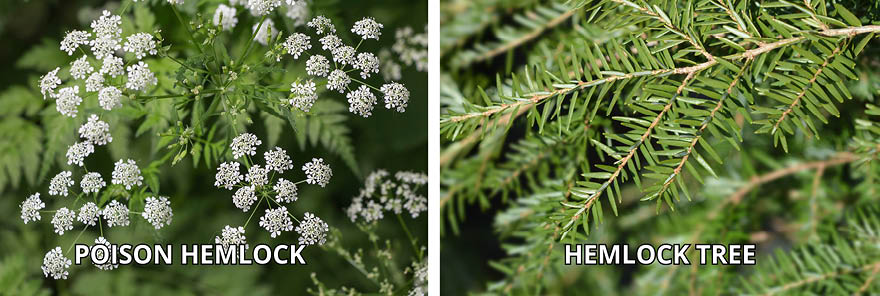In the world of equine health, distinguishing between the hemlock poison plant and the benign hemlock tree is crucial. Despite their shared name, one poses a hazard to horses, while the other may very well be an asset to your equestrian property.
Hemlock Poison (Conium maculatum)
Hemlock poison, scientifically known as Conium maculatum, stands as a threat to horses and various livestock. This toxic plant harbors potent alkaloids, including coniine and gamma-coniceine, capable of inducing paralysis and, in the most serious cases, death if consumed in large quantities. With its tall stem, delicate fern-like leaves, and small clusters of white flowers, hemlock poison is commonly found in fields, alongside roadsides, and in open pastures, presenting an accessible temptation to grazing horses.
Symptoms of Hemlock Poisoning in Horses
Horses that suffer from hemlock poisoning may display a range of distressing symptoms, including:
- Muscle Weakness: Hemlock poison targets the nervous system, leading to muscle weakness and trembling.
- Difficulty Breathing: Horses may endure respiratory distress due to the paralysis of their respiratory muscles.
- Excessive Salivation: One telltale sign of hemlock poisoning in horses is excessive drooling.
- Death: Without rapid intervention, acute hemlock poisoning can lead to the paralysis of vital organs, resulting in death.
Prevention and Treatment
Knowledge is the first line of defense against hemlock poisoning- this involves learning to identify the characteristic of the poisonous plant and its prevalence in your area. Preventing hemlock poisoning also relies on good pasture management, with regular inspections of grazing areas, as well as early identification and removal of any lurking hemlock plants. In addition, employing fencing to restrict horse access to potentially hazardous areas is another important precaution.
While a significant amount of hemlock poison would need to be ingested to pose a substantial threat to horses, the symptoms in acute cases of poisoning can become life threatening. Although there is no specific antidote available, there are methods to address symptoms. A gastric lavage / pump can be useful in removing as much of the toxic substance from the stomach as possible. In the case of severe symptoms, the treatment protocol also entails administering activated charcoal to absorb toxins and offering supportive care, including intravenous fluids and muscle relaxants.
Hemlock Trees (Tsuga spp.)
In contrast, hemlock trees, part of the Tsuga genus, are entirely unrelated to hemlock poison and do not present any direct danger to horses. The resemblance in their names arises from the similar aroma emitted by the tree’s leaves, which might be reminiscent of the toxic plant. However, it’s important to note that hemlock trees themselves are not poisonous. Unlike hemlock poison, the hemlock tree belongs to the pine family and possesses distinct characteristics, including a tall trunk, often towering over 100 feet in height, and branches gracefully sweep downward, adorned with needle-like leaves.
A few benefits can be found for hemlock trees in equestrian properties, including:
- Shade and Shelter: Hemlock trees provide shade during hot summer days and serve as natural windbreaks.
- Erosion Control: Hemlock trees play a role in stabilizing soil and preventing erosion, thereby safeguarding the integrity of pastures.
- Aesthetic Appeal: With their evergreen foliage, Hemlock trees can be used to elevate the visual appearance of equestrian properties, evoking a sense of serenity and charm.
Although these two plants share a common name, the hemlock poison plant and the tree are entirely unrelated. While one may pose a hazard to horses, the other can indeed enhance the aesthetics and integrity of your property. By remaining informed and actively addressing potential hazards in pastures, owners can ensure the safety and well-being of their horses.


